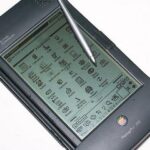Apple is one of the greatest companies on earth. They produce products that are unequalled in consumer technology. But like any company, they release products that are flops in the marketplace. Apple, unlike a lot of other companies, knows how to bury their stiffs like they never existed.
Apple’s foray into the mixed reality market with the highly anticipated Vision Pro headset has generated both excitement and skepticism. While Apple is renowned for setting industry standards with products like the iPhone and iPad, the Vision Pro faces significant challenges that could lead to its failure. But there are potential consequences of the Vision Pro’s failure and the reasons behind the doubts surrounding its success.
Apple has a track record of redefining consumer electronics, making its entry into the mixed reality market a significant event. However, several factors cast doubt on the Vision Pro’s potential for success and its impact on the mixed reality industry.
1. Costly and Exclusive
One of the most prominent concerns about the Vision Pro is its price tag. At a rumored cost of $3,500, it is significantly more expensive than other mixed reality headsets on the market. This high price could deter potential buyers and limit the headset’s accessibility to a niche audience.
2. Bulky and Uncomfortable
Reports suggest that the Vision Pro may be larger and heavier than its competitors, potentially making it uncomfortable to wear for extended periods. User comfort is a crucial factor for widespread adoption, and a bulky design could hinder the headset’s appeal.
3. Complexity
Rumors also point to a complex user interface for the Vision Pro. If true, this could create a steep learning curve for users, potentially alienating those looking for an intuitive mixed reality experience.
4. Immature Market
The mixed reality market is still in its infancy, with limited adoption and a small customer base. This presents a challenge for Apple, as it may struggle to sell enough Vision Pro headsets to make the product commercially viable.
If the Vision Pro fails to gain traction in the market, it could have far-reaching consequences for the mixed reality industry:
1. Dampened Innovation
Apple has a history of dominating markets it enters, and if the Vision Pro becomes the dominant mixed reality headset, it may discourage competition and innovation. Other companies may be hesitant to invest in mixed reality if Apple’s dominance seems insurmountable.
2. Discouraged Developers
Developers and creators thrive in ecosystems that promote experimentation and creativity. If the Vision Pro imposes rigid rules and standards, it could stifle innovation by discouraging developers from exploring new ideas and formats.
3. Fragmented User Experience
A successful Vision Pro could create a walled garden, locking users into Apple’s ecosystem and potentially isolating them from other mixed reality platforms and experiences. This fragmentation could hinder the growth of the mixed reality industry as a whole.
While Apple’s Vision Pro has the potential to revolutionize the mixed reality market, it’s important to remember that Apple is not the only player in the mixed reality space. Other tech giants like Meta, Microsoft, and Google are also investing heavily, and their innovations could still drive mass adoption, even if the Vision Pro falls short.
Apple’s history of occasional flops reminds us that even the most successful companies can make mistakes. Ultimately, the success or failure of the Vision Pro will be a critical turning point for the mixed reality industry, with far-reaching implications for innovation and consumer adoption.
Apple, a company known for its string of successful products, has indeed faced its fair share of failures throughout its history. These products, often ahead of their time or plagued by various issues, serve as a reminder that even tech giants can stumble. Here’s a look at some notable Apple products that struggled upon their release:

1. Apple Lisa (1983): The Apple Lisa, a GUI pioneer, had a price tag so astronomical that even NASA was envious. It was like buying a private rocket to the moon when all you needed was a bus ticket.Additionally, it faced stiff competition from the more affordable IBM PC, ultimately leading to its commercial failure.

2. Newton MessagePad (1993): The Newton was an early personal digital assistant (PDA) designed to recognize handwriting. While its handwriting recognition technology was innovative, it was often unreliable and often had a worse case of handwriting dyslexia than your doctor. Combined with its high price, these issues contributed to its downfall.

3. Power Mac G4 Cube (2000): The G4 Cube was a compact and stylish desktop computer, but its design came at a high cost. Its price-to-performance ratio was unfavorable compared to other Macs, making it a poor choice for many consumers. Plus, good luck upgrading it – it was more locked down than Fort Knox.

4. iPod Shuffle (2005): Apple gave us the Shuffle, a tiny music player with no screen or controls. Navigating your music library was like playing roulette blindfolded. Trying to find your favorite song? Good luck with that!
5. Apple Maps (2012): Apple Maps was launched with iOS 6 and faced significant backlash due to its inaccuracies, erroneous directions, and a lack of f eatures compared to its competitors, like Google Maps. It could easily send you on a wild goose chase even when searching for the nearest grocery store. This prompted Apple’s CEO, Tim Cook, to issue a public apology.
eatures compared to its competitors, like Google Maps. It could easily send you on a wild goose chase even when searching for the nearest grocery store. This prompted Apple’s CEO, Tim Cook, to issue a public apology.

6. HomePod (2017): The HomePod was Apple’s entry into the smart speaker market. Despite its premium build quality and sound, it was criticized for its high price point and limitations compared to competitors like Amazon Echo and Google Home. It struggled to gain market share in a crowded field.

7. iPhone 5C (2013): Marketed as a budget-friendly iPhone option, the iPhone 5C featured a colorful plastic casing. However, it did not meet Apple’s sales expectations, partly due to its perceived lack of premium features compared to other iPhone models and the iPhone 5S released concurrently.

8. iPhone mini (2020): the iPhone mini was a niche product that appealed to a small group of users. It was too small for many users, had a shorter battery life, and was more expensive than other budget-friendly phones. These factors contributed to its failure in the market. It received positive reviews from critics and some users appreciated its compact size. However, it was not a commercial success.
Now, these weren’t just misses; they were epic faceplants. But hey, even tech giants can trip over their own charging cables. Apple often learns from these setbacks and uses them to refine future products and strategies. The occasional flop serves as a reminder of the ever-evolving nature of the tech industry, where innovation and consumer preferences can be unpredictable.
Apple, the company that once made the iconic “1984” ad about the dangers of conformity, now seems hell-bent on creating a walled garden of its own with the Vision Pro. So, Tim Apple, here’s a friendly piece of advice: don’t let the Vision Pro be your “1984” moment. Make it affordable, accessible, and easy to use. Otherwise, you’ll just be shooting yourself in your Allbirds.


